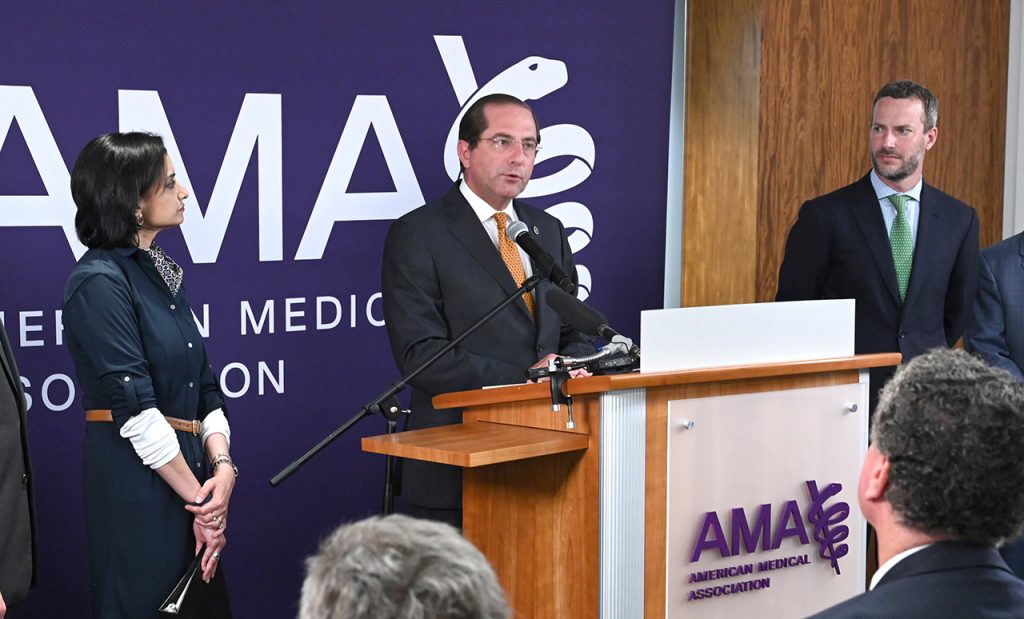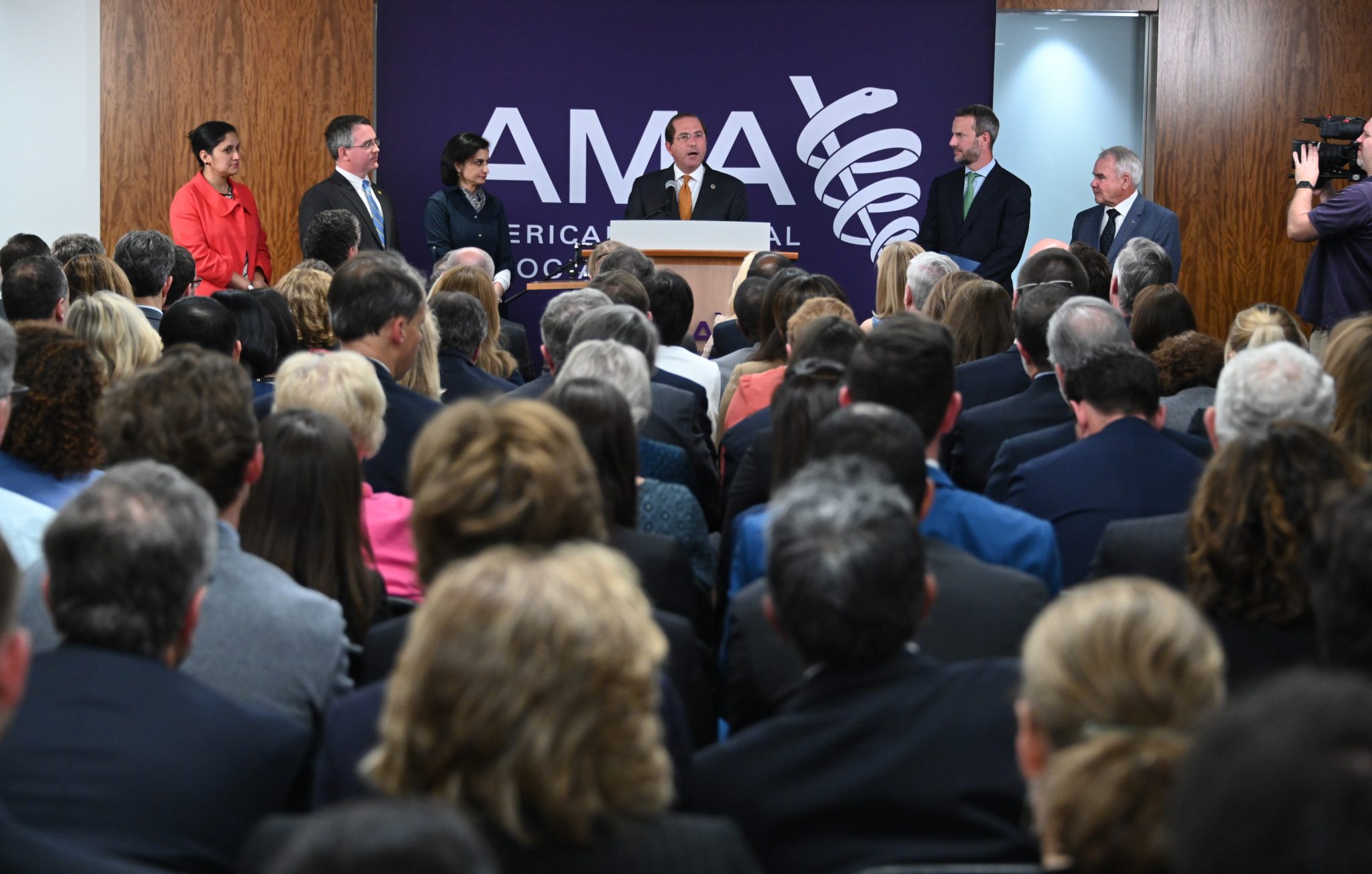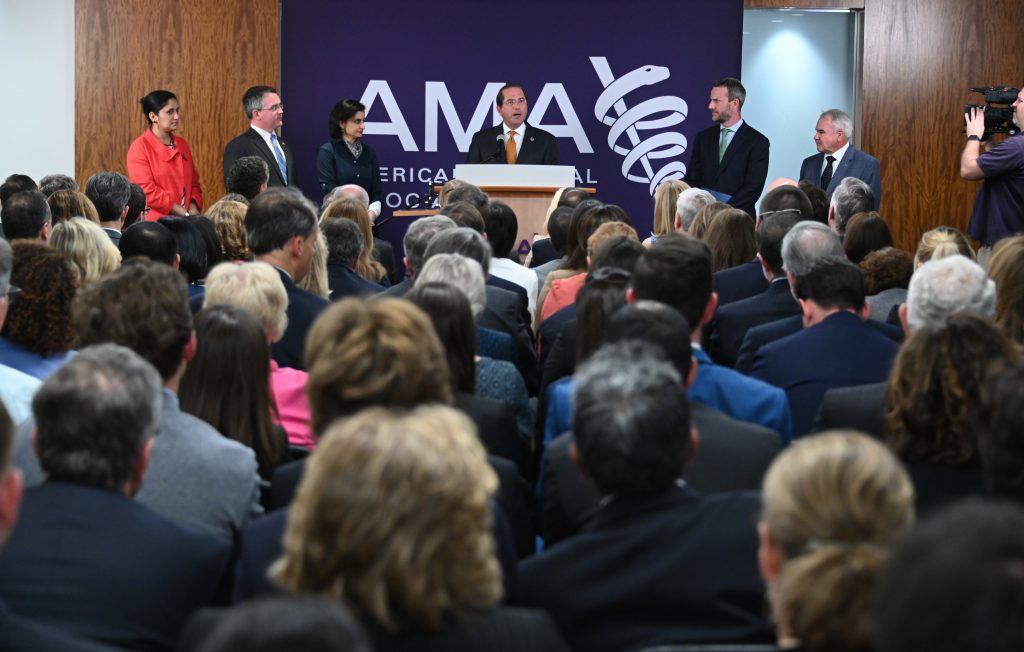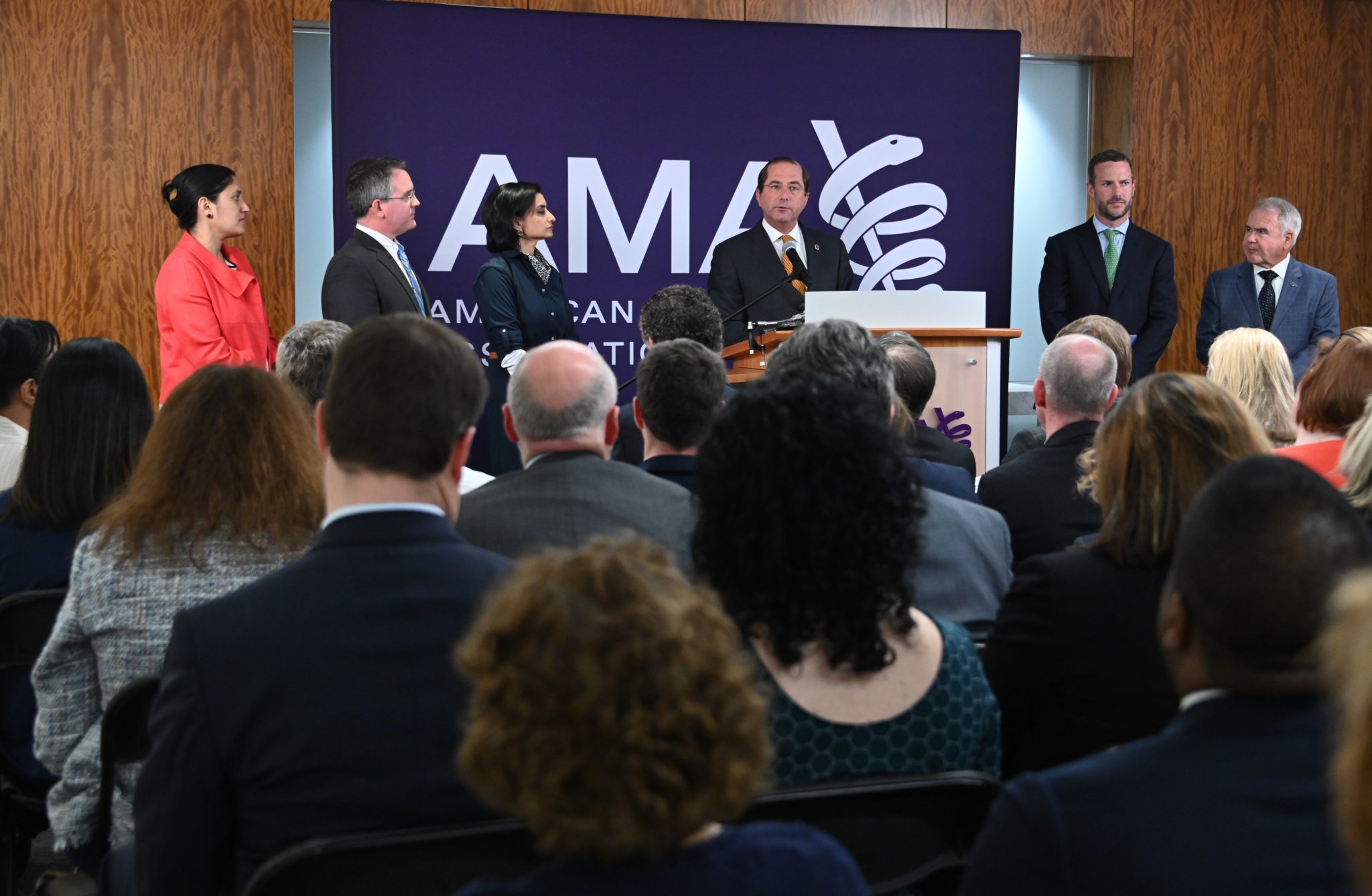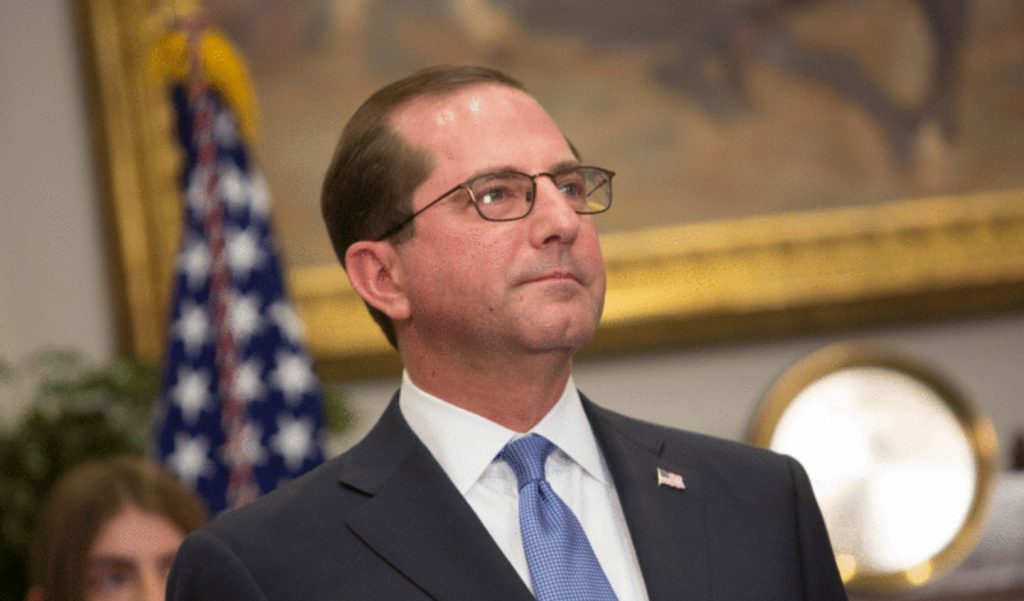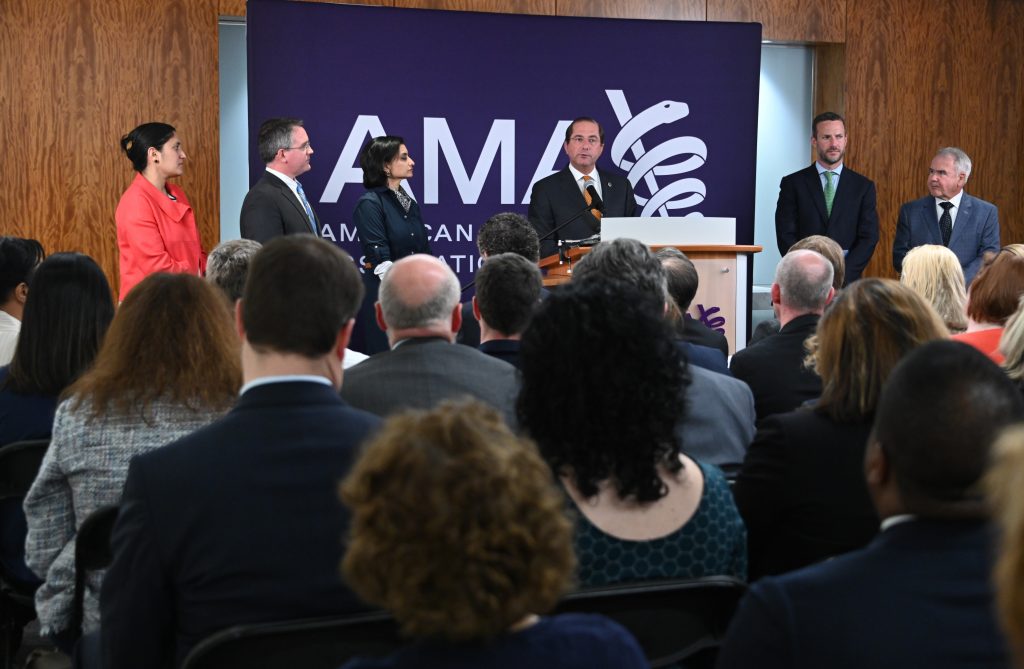
April 22, 2019 | CMS.gov
This is the speech (as prepared) delivered by HHS Secretary Alex M. Azar, April 22, 2019 in Washington, D.C.
Good afternoon, everyone, and thank you so much for joining us. Thank you in particular to the American Medical Association for inviting us here to announce today’s news.
It’s appropriate to be at the headquarters of an organization with such a long history in American medicine, because I believe we’ll look back at what we’re announcing today as a historic turning point in American healthcare.
Today’s announcement is the culmination of years of work by many at HHS and throughout American healthcare.
When I announced last year that moving toward a value-based healthcare system would be one of my priorities as secretary, I was well aware that I was at least the fourth HHS Secretary to take this issue seriously, dating back through Secretaries Burwell and Sebelius to Secretary Leavitt, who first laid out the idea of paying for value rather than procedures.
It is only thanks to the efforts of my predecessors that we get to take this major step forward. Today also could not be possible without the enthusiastic engagement of so many physicians and other providers. That includes members of HHS’s advisory committee on physician-focused payment models, PTAC—a member of which we have here today, Kavita Patel.
That committee has analyzed a huge number of payment model ideas from physicians who are excited about innovation. Their work, including submissions from the American Academy of Family Physicians, the American Academy of Hospice and Palliative Medicine, and the Coalition to Transform Advanced Care, has inspired many significant aspects of the initiative we’re announcing today.
So what are we announcing? We’re launching CMS Primary Cares—an initiative with two sets of new payment models that will enroll a quarter or more of traditional Medicare beneficiaries and a quarter of providers in arrangements that pay for keeping patients healthy, rather than ordering procedures.
The Primary Care First path will allow smaller primary care practices to be paid a simple, flat stream of revenue for each patient. When a patient stays healthy and out of the hospital, these practices will get paid a bonus. But if the patient ends up sicker than expected, these practices will bear responsibility for the extra spending, up to a certain share of their practices’ revenue.
The other path, Direct Contracting, is more ambitious and aimed at larger practices. Just like in Primary Care First, when patients have a better experience and stay healthier, these practices will make more money. But if patients end up sicker, Direct Contracting practices will bear the risk for the extra health spending, not just at their own practice but throughout the system.
Providers will have greater flexibility to spend these resources how they want, allowing them to come up with innovative ways to care for patients—and receive significant savings if they keep patients healthier than expected.
Within this initiative, we will also have options for providers who want to focus on particular populations and particular serious illnesses—where there is huge potential for better health outcomes and more savings.
We’re also seeking input on another Direct Contracting model, to award a local entity a contract for an entire geographic area, covering all patients and providers in the area who want to opt into this arrangement.
This would provide an unprecedented ability for that local organization to negotiate better rates than Medicare does today, take responsibility for outcomes, and provide benefits that work for the local community’s needs.
Primary care is a small slice of health spending overall, but it has a significant impact on downstream costs and quality.
This initiative will radically elevate the importance of primary care in American medicine, move toward a system where providers are paid for outcomes rather than procedures, and free doctors to focus on the patients in front of them, rather than the paperwork we send them.
In just a minute, I’ll turn things over to Administrator Verma—I’m sorry to say, she is the one who sends doctors the paperwork, but she’s made sure there’s less and less of it every year.
Then we’ll hear from my senior advisor for value-based transformation and CMMI’s director, Adam Boehler. They’ll both discuss more details about this initiative and the range of options it’s going to offer for patients and clinicians.
Moving in this direction, toward value-based care, has been largely just a vision for so long. Now, value-based care is a reality, for a quarter of traditional Medicare beneficiaries in primary care, and a significant and growing number of patients in other settings as well.
This is the pivotal, hockey stick moment in paying for value in American healthcare.
This initiative will lay the groundwork not just for better care and lower costs in the $700 billion Medicare program and the $580 billion Medicaid program, but will also help drive innovation toward a new, patient-centered approach in our entire $3.5 trillion healthcare system. This initiative is specifically designed to encourage state Medicaid programs and commercial payers to adopt similar approaches.
I believe that true transformation is possible because of the experiences we’ve gained, but also the bold leadership we have today. Read the full speech





